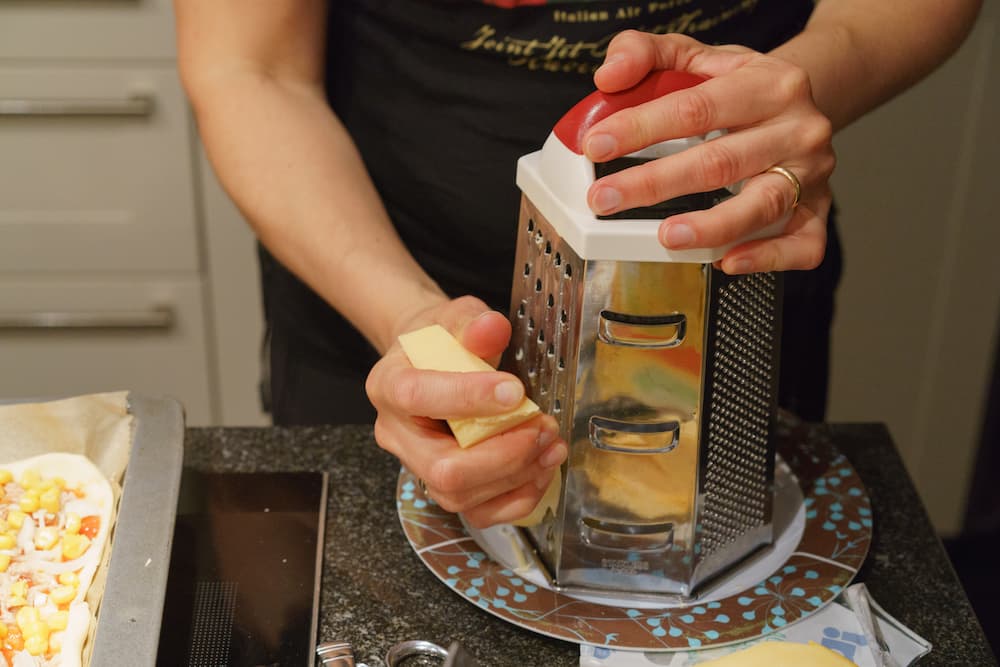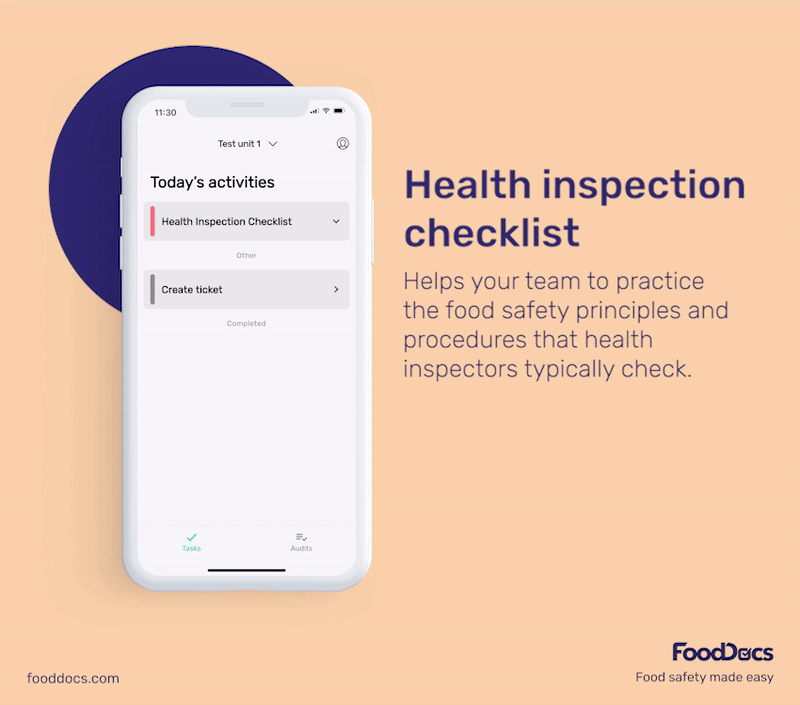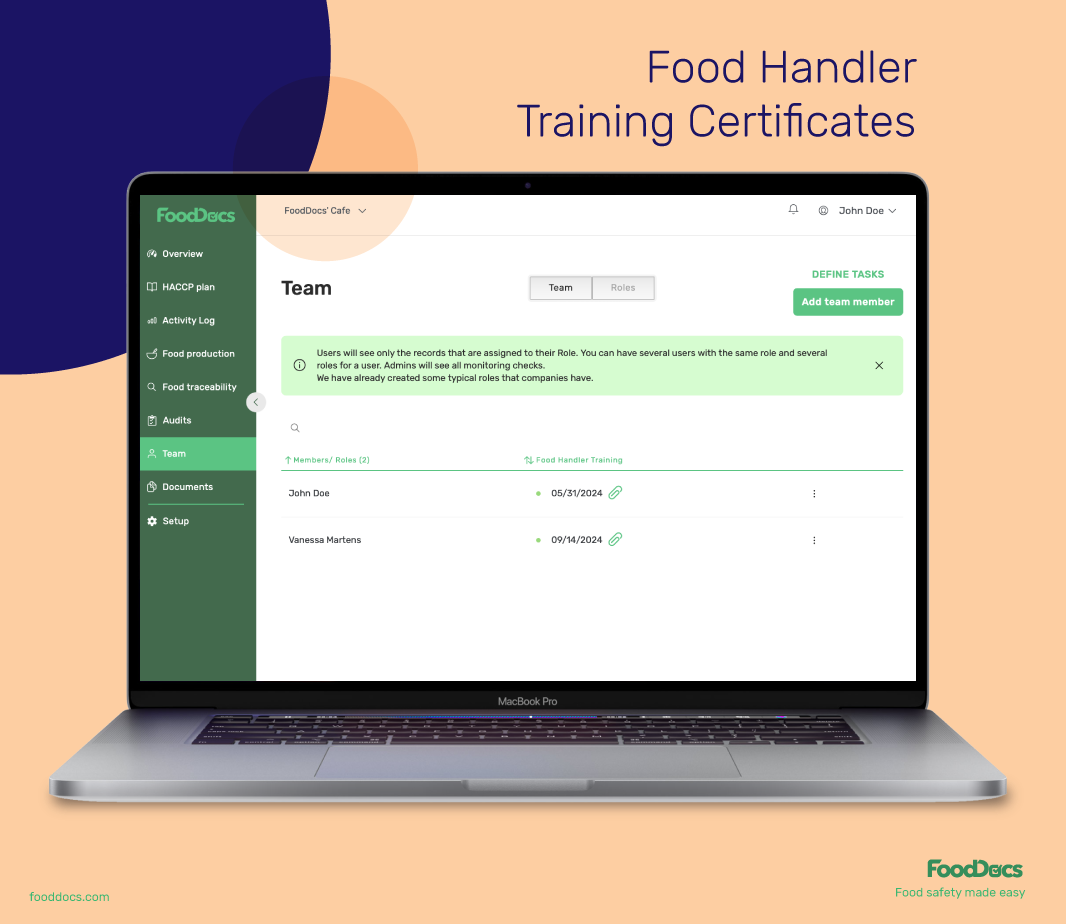Are all types of jewelry not allowed in the food business? Discover which are allowed, not allowed, and why.
A part of every food handler's commitment to food safety includes how you present yourselves. Believe it or not, what you wear affects food safety in a food establishment.
Small articles of clothing or accessories may serve as physical contamination and can even lead to a large-scale food recall. Learn which piece of jewelry a food handler is allowed to wear.
Key points covered:
- Food handlers are strongly discouraged from wearing jewelry while working due to its potential as a physical hazard that can cause contamination.
- The only type of jewelry generally permitted in food businesses is a plain wedding band without engravings or stones.
- Jewelry such as rings and watches can obstruct effective handwashing, allowing bacteria to thrive and potentially contaminate food.
- Foreign materials from jewelry like rings or earrings can lead to food recalls when they become physical contaminants in food products.
- Wearing jewelry increases the risk of cross-contamination, where pathogens can transfer from the jewelry to the food during preparation.
- In addition to being a choking hazard, jewelry can also contribute to injuries like cuts if it becomes mixed with food.
- The FDA Food Code provides guidelines against wearing most jewelry in food settings but leaves some specific decisions to local food safety agencies.
- Food handlers might be allowed to wear single-use gloves over a plain wedding band as a mitigation strategy, depending on local regulations.
- Touching facial jewelry, like nose piercings, during food preparation can also lead to contamination of food and utensils.
- FoodDocs makes food safety compliance easy with an intuitive monitoring system, mobile app, and step-by-step educational instructions so safety is always top of mind for food handlers.
In the United States, contamination of food by foreign materials remains one of the top reasons for a food recall. Contamination by physical materials can come from food handlers but can easily be controlled with proper hygiene.
In this article, we discuss how jewelry and other physical objects can harm public health.
Are food handlers allowed to wear jewelry?
Food handlers are highly discouraged from wearing jewelry during service and work hours. In most food industries, wearing any jewelry is prohibited per food safety standards.
Jewelry is considered a physical hazard that can cause choking, cuts, injury, or other foodborne illness when ingested. These articles often obstruct proper handwashing and make the process ineffective. Rings and watches cover parts of the skin and can harbor harmful bacteria which can contaminate food.
Additionally, rings and earrings, especially ring with stones implanted, may fall into the food being prepared and become a choking hazard. Depending on your location's regulations, there may be some specific rules pertaining to which piece of jewelry is prohibited and allowed in a food business.

What jewelry can food handlers wear while working?
Food handlers are generally not allowed to wear any jewelry worn on their hands except for a plain wedding band. The band must not have any grooves, embossing, or engraving, which could collect harmful bacteria.
No other jewelry and accessories are permitted when operating in a food business. Prohibited accessories even include medical information bands and watches according to the FDA Food Code.
Although the Food Code recommendations for food safety do not specify which other accessories and jewelry are prohibited from being worn, food handlers are expected to practice proper hygiene standards. Accessories can cause cross-contamination with the food products being prepared and lead to foodborne illness. Touching them during food preparation may transfer pathogens into the food, or the jewelry itself may fall.
Consult with your local food safety agencies regarding food safety regulations on wearing jewelry. Some food regulations require employees to wear single-use gloves if workers have a wedding band.
What type of hazard could occur by wearing jewelry while prepping food?
As mentioned, any jewelry is considered a physical hazard. The likelihood of the jewelry falling into the food being prepared or getting caught on a machine is always present. The latter possibility is more likely if the jewelry contains stones or other attachments.
Wearing jewelry, even a plain marriage band, makes handwashing less effective. Rings cover a portion of the finger which becomes protected even from soap and rinsing water. In addition, the handwashing soap may also remain inside it even after rinsing. This occurrence will encourage bacterial growth and cross-contamination.
When it comes to jewelry worn on the other parts of the body, such as earrings, touching them may also cause cross-contamination.
Any jewelry accidentally mixed into the food being prepared is considered a foreign material contamination and, therefore, a physical hazard. Pieces of jewelry can cause food issues, such as choking, cuts, or other injuries when unintentionally ingested.
In addition, wearing jewelry can cause other types of food safety hazards, such as biological hazards. Bacteria and other pathogens may gather in rings and earrings, which can get into the food and cause spoilage.

Why is jewelry inappropriate in the kitchen?
Wearing jewelry in the kitchen presents several potential hazards. Any jewelry is a potential food contaminant. The prohibition of wearing jewelry in the kitchen is considered part of good food and personal hygiene.
Here are some important reasons why wearing jewelry in the kitchen is inappropriate:
- Jewelry is a choking hazard.
- Jewelry gathers dirt and pathogenic microorganisms.
- Jewelry reduces the effectiveness of hand washing.
- Jewelry can tear single-use gloves and cause damage to food packaging.
- Touching jewelry can cause cross-contamination.
Observing food hygiene is one of the most important operations that a food company must follow. It is a prerequisite to maintaining food safety compliance and must be enforced regularly.

Can food handlers wear necklaces?
Although the U.S. Food Code does not specify any strict rules on wearing necklaces, these types of jewelry are not advised to be worn during operations. Necklaces can gather dirt or, worse, fall into the food item being prepared.
Can chefs have nose piercings?
While having a nose piercing as a chef is not a problem, it is highly discouraged to be worn during service. Nose piercings, like any other earrings, can harbor germs and can cause cross-contamination.
Touching the nose piercing and other facial jewelry during cooking can contaminate utensils and food. The likelihood of contamination is still present, even with a face mask or a mouth guard.
Can you wear rings in hospitality?
In the hospitality and food service industry, you can only wear a plain wedding band. Other types of rings with stones or designs are not permitted as they can contaminate foods.
As explained earlier, rings prevent effective handwashing regardless of whether it is plain or not. Additionally, rings can fall into the food being prepared, especially when they are ill-fitting.
Can you wear stud earrings while preparing food?
Stud earrings, although small, are recommended not to be worn while preparing food. In the event that the earring falls into the food being prepared, food handlers may not see them, causing a choking hazard to the customers.
Most food businesses require food workers to remove all facial earrings and other jewelry when performing activities around food.

How can you help food handlers remember food safety tasks?
Compliance with food safety and hygiene rules requires diligence and accountability among food handler requirements. You can incorporate food hygiene reminders into your food safety management system, but checking them every day one-by-one will require time and take away from your other food safety tasks.
What you need is an intuitive solution that will help you remind and train food handlers regarding the most essential food hygiene tasks every day. Use our digital Food Safety Management System to solve your problems regarding everyday repetitive food preparation tasks.

With our digital solution, you can get the following benefits for your food safety operations:
- Our software solution can automatically produce food safety monitoring logs and checklists based on the nature of your everyday operations. Some of our most applicable food hygiene logs include the Employee Hygiene and Health Inspection Checklists.

- Our automatically generated monitoring logs and checklists are equipped with detailed instructions on performing and monitoring food safety tasks. With this feature, you can ensure that food handlers understand how to effectively do a food safety operation.
- Get a smart notification system that will alert food handlers whenever a task needs to be done. This solution can be used to ensure that every food safety task is done on time for every food handling shift.
In addition to solutions for employees, our digital Food Safety Management System also offers features to improve the efficiency of managing your business:
- Use a dedicated Team module that features automated storage for Food Handler Training Certificates. Store all important training-related certificates, their validity period, frequency of renewal, and issuance dates. Our system will automatically notify the food safety manager if any training certificate renewal is almost due.

- Get a real-time dashboard that gives you an overview of your food safety operations. This dashboard will reflect areas that need more attention which will help you address problem areas faster.
- Store and organize all digital documents in one cloud storage dedicated to your food business.
The best part about the solutions that we offer is that you can enjoy all of them within 15 minutes of signing up. Using artificial intelligence and a machine-learning program, our system can automatically generate all essential food safety documents based on your operations.
All you need to do is answer a few basic questions that will describe your operations to our system, and your digital Food Safety Management System can be generated in minutes.
Our system was built to help all food business owners maintain compliance at all times. You can enjoy and experience the benefits of our digital solution with a free 14-day trial.

Frequently asked questions
Do you still have questions regarding this topic? Here are some of the most frequently asked questions on which jewelry is allowed to be worn during food preparation.
What is the only allowed jewelry when preparing food?
The only allowed jewelry when preparing food is a plain wedding ring. Food service employees must remove all objects on their hands and wrists except a simple band or wedding ring. This task reduces the risk of contaminating the food during preparation and keeps customers safe.
Can I have a nose piercing as a waitress?
Waitresses are allowed to have nose piercings but are advised to be removed during service. Nose piercings are similar to other earrings that can collect dangerous bacteria and cross-contaminate the food served. Additionally, nose piercings have the tendency to fall into the food and may lead to choking.
Can you wear a medical bracelet while working with food?
The FDA Food Code advises against wearing a medical bracelet while working in a food processing environment. In this case, any medical condition must be communicated with the food safety team for preparation. This operation will help ensure the food handler's safety in case an emergency occurs and the medical alert bracelet is not worn.
Is wearing jewelry a physical or microbiological hazard?
Basically, wearing jewelry is considered a physical hazard to customers. Although, like any other physical hazard, they can invite the presence of microbiological hazards such as bacteria and cross-contaminate the food being prepared.
The majority of food businesses do not allow any type of jewelry, including nose rings, in the kitchen. This regulation aims to minimize the risk of cross-contaminating the products by touching the nose rings or preventing them from accidentally falling into the food.
Can waitresses wear earrings?
The food safety rules on wearing jewelry for waitresses who do not engage in the kitchen may vary depending on your location. Generally, the only jewelry allowed by food safety agencies is a plain band ring. Some food businesses may allow waitresses to wear simple stud earrings.
